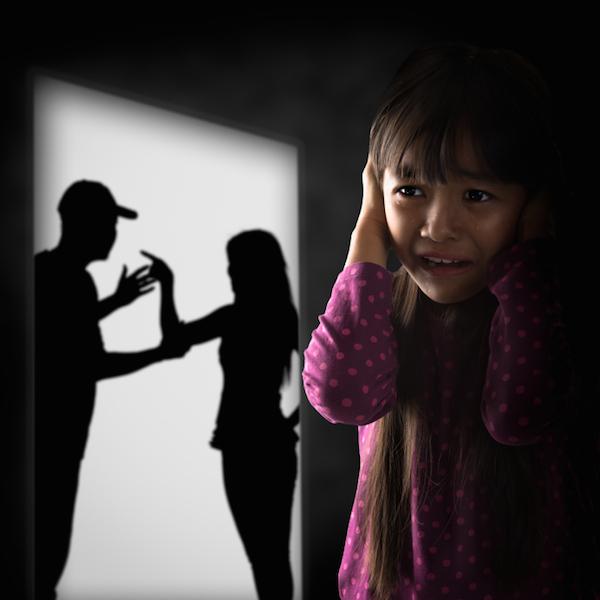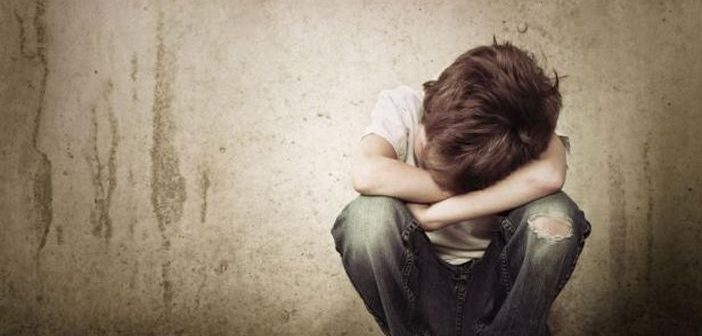Domestic violence – or more broadly, domestic abuse – is a type of abuse that occurs within family units. This can happen between spouses, across generations, and even between extended family members.
Salma Elkadi Abugideiri, founder of the Peaceful Families Project, notes in a 2010 article for the Faith Trust Institute that there’s unfortunately a dearth of information and data available about domestic violence in Muslim communities.
“Often, Muslims are part of studies of particular ethnic groups (Arab, South Asian) but may not be identified specifically as Muslims,” Abugideiri writes. “Also, due to the taboo nature of the subject, Muslims are often reluctant to report or speak out about their experiences.”
However, there are two surveys that suggest that members of the U.S. Muslim community experience domestic abuse at rates similar to those of the general population.
“In a survey of 63 Muslim leaders and community members, at least ten percent of participants reported having experienced physical abuse,” Abugideiri writes. “In another survey of 500 Arab women (98 percent of whom were Muslim) in the Dearborn, Michigan area, 18 to 20 percent of the women had experienced spouse abuse,” she adds.
Physical signs of domestic abuse (like bruises, cuts, choke marks, and broken bones) can be easier indicators to spot as an outsider. However, other types of abuse – like verbal, emotional, sexual, and financial – can be insidious and more challenging to observe.
These other forms of abuse may be such an ingrained part of the dynamic of the relationship that the victim may not even know they are, in fact, being abused. However, this does not mean the abuse lacks impact. Domestic abuse can have profound effects on all victims, including children witnesses who may not be a direct target of the abuse itself.
Young children more affected than adults
Sadly, a growing body of research now suggests that the younger a child is when they’re exposed to abuse, the more profound the negative effect.
Consider this: developing young children are hardwired to learn from and emulate the world around them from the moment they’re born. This means that they pick up habits and patterns from their parents or other adult caregivers.
However, children that live in homes where domestic abuse is common, grow up in an environment dominated by fear. This kind of home is filled with anxiety, tension, and is completely unpredictable.
Children observe, listen, and learn from their immediate family the “right” and “wrong” ways to react to situations and deal with conflict. Therefore, living in an unhealthy and unstable domestic situation means they’re likely to adopt and internalize many of the broken systems and behaviors demonstrated by those around them.
Essentially, young children are taught that abusive and irrational behaviors are “normal,” and adopt those behaviors into their personal habits and world-view as they grow.
Whether these learned personality traits are healthy or unhealthy, they’re absorbed by the sponge-like minds of young children. Their openness to learning, and fast brain development in the early years, makes children some of the most heavily impacted victims – even when they themselves are not the target of physical or verbal abuse.
The first five years
Doctor and Senator Bill Frist writing for Too Small to Fail notes, “Between birth and 5 years old, 90 percent of a child’s brain development occurs, and at a lightning-fast pace. Every sight, smell, sound and sensation makes an impact.” Very young children are most likely to adopt a behavior if they see or experience that behavior before the age of five.
Brain development is even more significant from age zero to three – the period of development where children’s brains are producing 700 new neural connections every second!
The first years of a child’s life are the most crucial. Sadly, due to the pressures and changes that occur in relationships after children are born, the first five years after a child enters the world are also the most likely to be abusive.
Long-term effects on children
In homes where domestic violence is the norm, children are often consumed with surviving the day rather than making time for fun, relaxation, or even planning for their future.
They may feel responsible for the abuse of their parent or sibling, internalize feelings of shame as low self-esteem, and may even be injured when stepping in to save a parent victim or sibling from abuse.
The Gold Coast Domestic Violence Prevention Center notes that children and young people may react to domestic violence by experiencing feelings of self-blame, helplessness, sadness, shame, fear, anger, and numbness. The grief, worry, and other strong emotions they feel can also lead to impacts in other areas of their lives.
The center notes some of the common symptoms children growing up in an abusive home environment may exhibit:
- Poor concentration
- Aggression, hyperactivity, disobedience
- Disturbed sleep, nightmares
- Withdrawal, low self-esteem
- Showing no emotion (‘spaced out’)
- Always on edge, wary
- Fantasies about normal home life
- Pessimism about the future
- Physical symptoms

For older children the impacts of experiencing or witnessing abuse can manifest in other ways as well:
- Depression and anxiety
- Shame or embarrassment about family
- Poor self-image, low self-esteem, or eating disorders
- Feeling isolated from others and finding it difficult to communicate
- Taking on a caretaker role prematurely or sustaining physical injuries while trying to intervene or protect other victims
- Parental abuse, violent outbursts, or other parent-child conflict
- Participating in dangerous risk-taking behaviors like sexual activity and substance abuse
- Low academic achievement or even dropping out from school
- Staying away from home, leaving home early, running away from home, or even entering marriage or relationships early in order to escape from the family home
- Experiencing violence in their own dating relationships
- Suicide
How we can help
While some countries may have low reported rates of domestic violence and abuse, the numbers need to be understood for what they are – reported rates. Not all victims speak out about their abusers.
Many victims feel cultural pressure to conform to social norms and downplay or hide the abuse. They may fear retaliation and revenge from a spouse or family member if they speak up about what they’re experiencing at home. Therefore it’s crucially important to ensure that Muslims know the best ways to help victims of domestic abuse in their communities.
The youngest victims are also unable to speak up for themselves or seek help. Their “requests for intervention” are more likely understood through the signs and symptoms listed above.
To expose and prevent abuse of the youngest victims its crucially important for Muslim communities to reach out and connect with newly-weds and parents of young children.
Communities need to look for signs of relationship troubles and intervene early in abusive situations before they get worse. This can be accomplished by arranging free or low-cost family-friendly events and services at community centers. Observation can also be accomplished by managing meal train-type community meal donations for new parents to keep these families with young children connected to the larger community.
When we understand the heavy impact abuse can have on the most vulnerable among us, we can more easily recognize the symptoms of domestic abuse in children. By staying aware and informed, we can better work together to find even more solutions to domestic violence and abuse – to the benefit of our youngest community members.
Read More:
Addressing Domestic Violence Through Fiction
Muslim Men Fight Domestic Violence in Australia
He Turned Violent & Unfaithful After Marriage